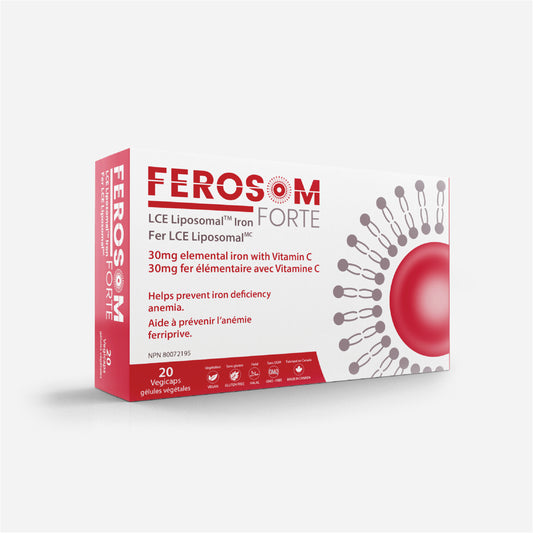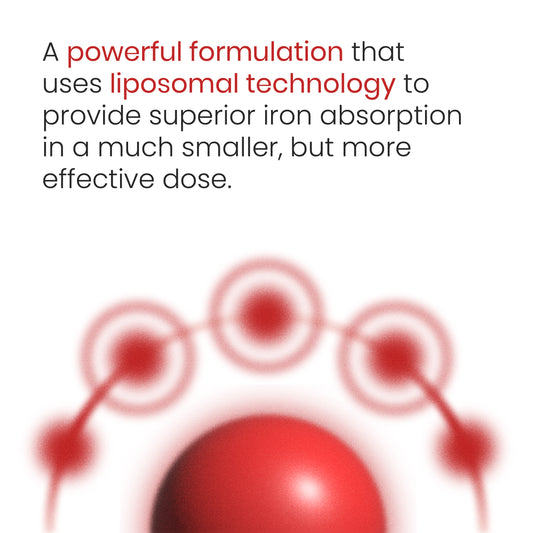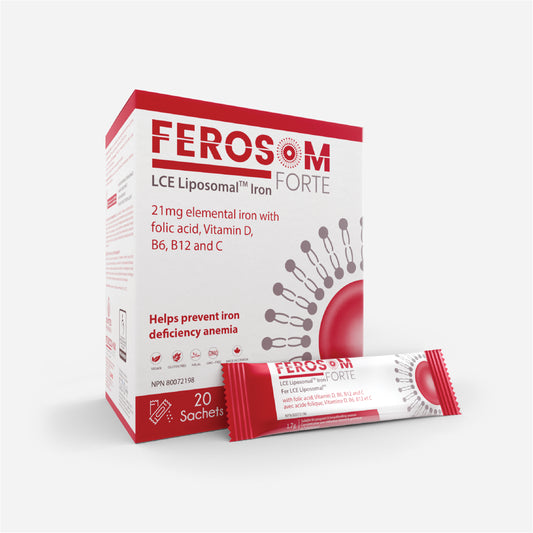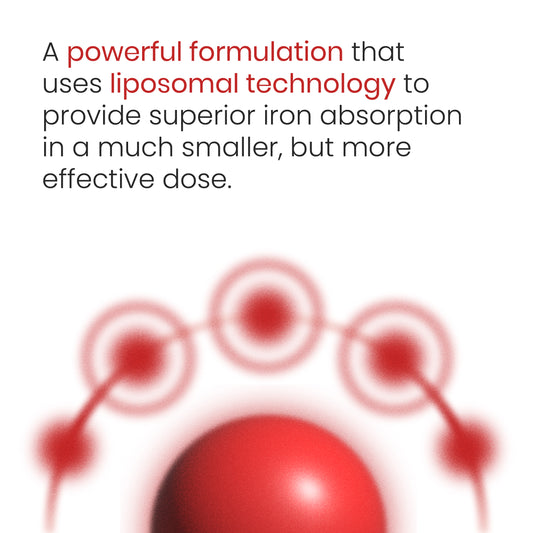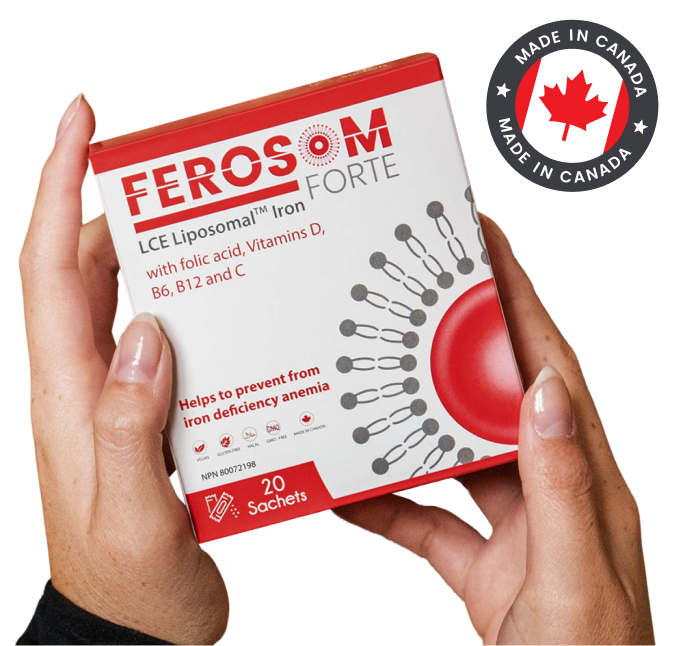

Up to 25% of the global population suffers from iron deficiency. It’s one of the most common nutrient deficiencies worldwide and comes in many different forms. Today we’re putting one in the spotlight: iron-refractory iron deficiency anemia (IRIDA).
This rare condition is caused by a genetic mutation and can be difficult to treat. For some people with IRIDA, all the red meat in the world couldn’t boost their iron levels. So what exactly is the science behind this condition? And what can you do to spot it quickly and treat it effectively? All the answers are right ahead.
What causes iron deficiency anemia?
To better understand iron deficiency anemia, it helps to understand iron. Iron is a vital nutrient that produces hemoglobin—a protein found in red blood cells. Hemoglobin is responsible for transporting oxygen throughout the body to keep you energized, alert, and strong.
Iron deficiency anemia happens when there is a lack of iron in the body. There are a few common causes:
- Chronic blood loss (including heavy periods and gastrointestinal bleeding)
- Lack of iron in your diet (common in vegetarians and vegans)
- Pregnancy
- Inability to absorb iron
But there’s another, lesser-known cause of iron deficiency anemia: your family tree.
Can you inherit iron deficiency anemia?
Yes, iron deficiency anemia can be passed down through genetics. This is particularly true for a rare subtype called iron-refractory iron deficiency anemia—or IRIDA for short.
People born with IRIDA have a gene mutation that causes iron deficiency. This makes it harder for their bodies to absorb and store iron, even if they consume a good amount of iron in their diets.
What is the science behind IRIDA?
IRIDA most commonly impacts the TMPRSS6 gene. This gene tells the body how to create matriptase-2—a protein responsible for regulating iron. If the gene stops working the protein does too, and so does your body’s ability to absorb and use iron properly.
The result? Iron deficiency anemia. However, this specific form of iron deficiency anemia is rare. To get IRIDA, both your parents must have the gene mutation and you must receive both copies. That’s why only about 1 in every 1 million people around the world have IRIDA.
What are the symptoms of IRIDA?
IRIDA and regular old iron deficiency anemia share a lot of the same symptoms:
- Extreme fatigue and weakness
- Headaches
- Fast heartbeat and shortness of breath
- Pale skin
- Pica (the craving to eat things that aren’t food, like ice or dirt)
- Problems focusing
So how do you know if you have IRIDA or iron deficiency anemia? One distinguishing factor is that IRIDA is usually diagnosed during childhood.
How does IRIDA affect children?
Luckily, IRIDA does not seem to impact a child’s growth and development. Some kids will experience regular anemia symptoms, like fatigue and weakness. In rare cases, children with iron deficiency anemia might experience:
- Nail changes
- Hair loss
- Tongue swelling or dry mouth
- Difficulty swallowing
If you notice any of the above symptoms in your child, talk to your doctor about testing for iron deficiency anemia. Although many cases of IRIDA resolve with age, early diagnosis is crucial to manage and address the condition effectively.
How do you treat IRIDA?
Every case of IRIDA is unique and so is the treatment approach. Your doctor will tailor a treatment plan specifically to you or your child’s needs.
Iron supplements are usually the first course of action. A Liposomal iron supplement ensures your body can absorb the highest amount of iron without acid breakdown in the stomach (and the harsh gastrointestinal side effects that come along with it).
Your doctor might also suggest taking vitamin C with your iron supplement to further boost absorption. A 2019 research study found that 10 weeks of iron and vitamin C supplementation significantly improved iron levels in children with IRIDA.
(Pro tip: Supplements like Ferosom Forte are already infused with vitamin C for added convenience.)
If iron supplements aren’t working, your doctor might prescribe regular IV iron infusions. Regardless of the treatment plan, you should monitor your iron levels regularly and address symptoms ASAP to improve your quality of life.
What is the best iron supplement for iron deficiency anemia?
Ferosom Forte is a Liposomal iron supplement with the highest absorption rate on the market—and the fewest side effects.
Liposomal technology encapsulates the iron within a protective layer. This makes it easier for the iron to be absorbed into the small intestine and stored for later use. The absorption rates of Liposomal iron are similar to certain doses of IV iron—making it an incredibly effective iron supplement for IRIDA and other forms of iron deficiency anemia.
Available in both capsule and sachet form, doctors across Canada recommend Ferosom Forte to give your iron levels the boost they need.
Step one for tackling iron deficiency: knowledge.
IRIDA and iron deficiency anemia can feel like overwhelming challenges. But reading this article is the first step to taking control of your condition. Talk to your doctor about your symptoms and tap into helpful resources, like the Ferosom blog, to learn how different factors might be impacting your health. The more you know, the more empowered you’ll feel.
REFERENCES USED:
https://www.medicalnewstoday.com/articles/can-iron-deficiency-anemia-be-genetic#diagnosis
https://www.childrenshospital.org/conditions/irida
https://www.sciencedirect.com/science/article/abs/pii/S1079979618304170
https://www150.statcan.gc.ca/n1/pub/82-003-x/2012004/article/11742-eng.htm#:~:text=Iron%20deficiency%20affects%2020%25%20to,%25%20to%202%25%20in%20males.


